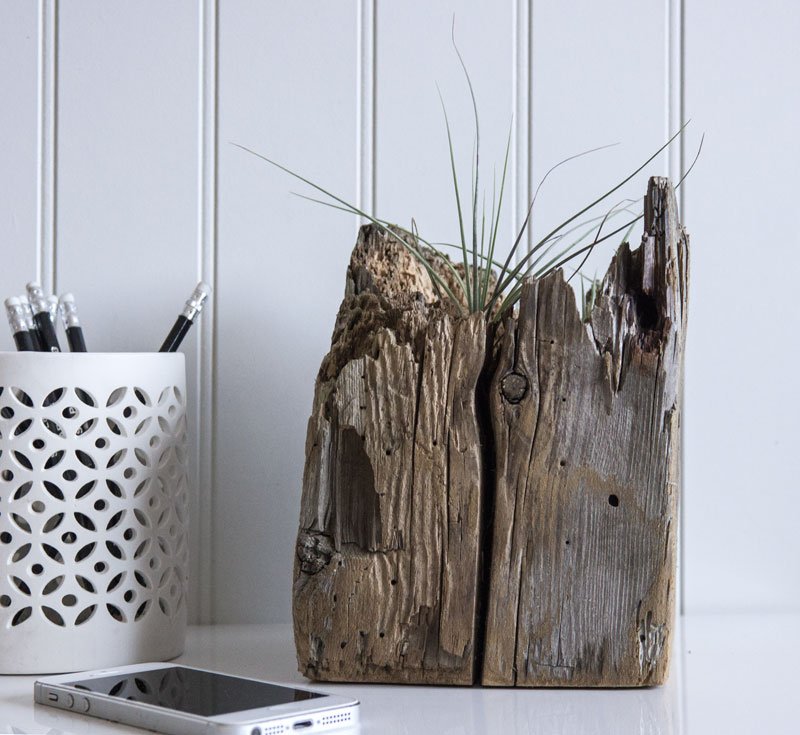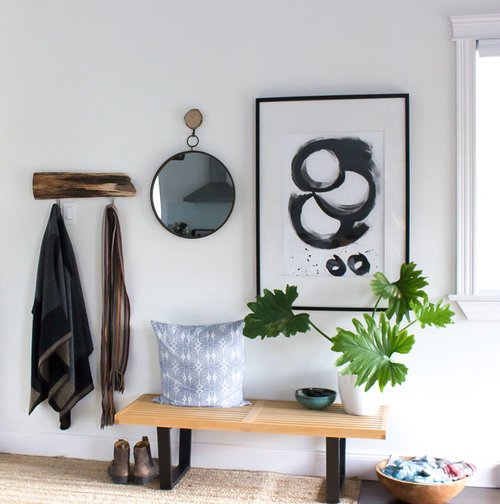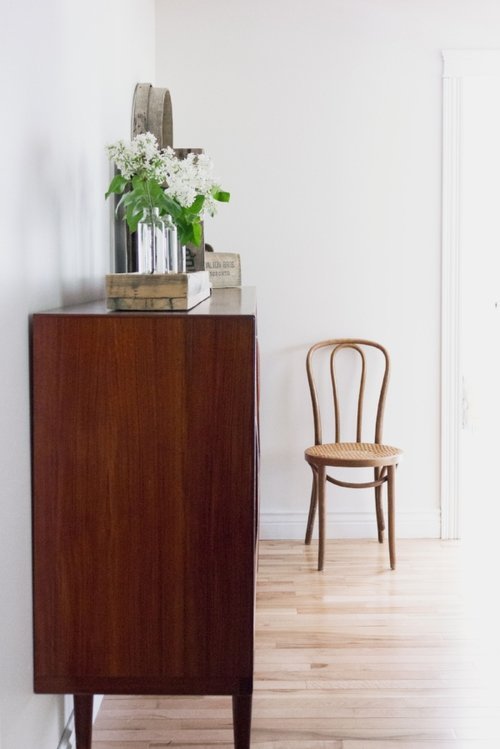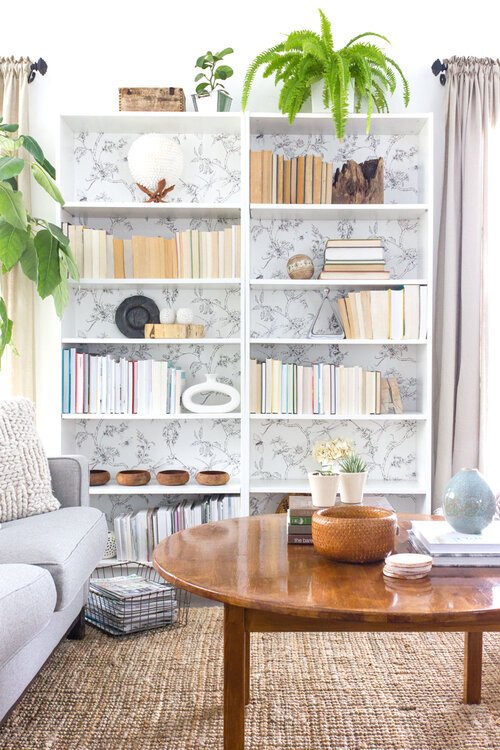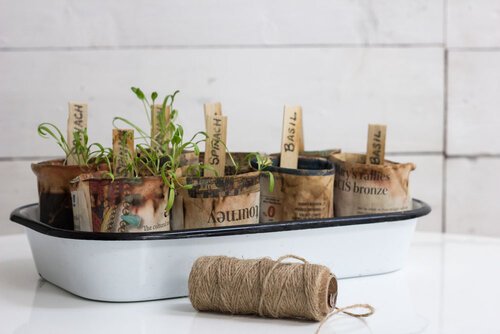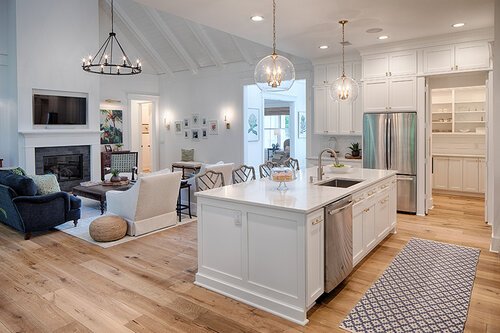How To Curate A Simple Home
Is this you?
You're spending too much time cleaning and taking care of the house and too little time doing the things you love.
You have stuff that was handed down or given to you that you don't love, but don't know what to do with it.
You want to feel relaxed and rejuvenated at home, but it feels too crowded, overwhelming or incomplete, like you always have something you need to do.
You'd love to entertain more, but are too embarrassed by your home to invite others over.
If you answered yes to any of these questions, the answer is to curate a simple home.
Curating doesn't mean creating - you don't have to renovate or design a whole new home to get what you love. You don't have to buy a ton of furnishings or accessories or even organizational tools.
Curating means pulling your space together in an intentional way. Think about how museum and art gallery curators pull things together in very purposeful design so that we can have the best experience. You can do the same thing for your home.
It means using what you have but only keeping what contributes to the home and life you want. You use and present those things in a way that will make you smile, pause and feel good. It means surrounding yourself with things that will help you thrive in an environment that will encourage mindfulness in the present and be supportive of your best future. It means to take charge and live by design.
Are you ready to take charge of your home?
HERE ARE 6 STEPS TO CURATING YOUR OWN SIMPLE HOME:
Step 1: Give everything a loving place.
When you have 'stuff' stuffed everywhere, it feels like those things have no meaning. And if you have stuff without meaning in your home, you're taking up space where love and peace and comfort could live.
Every single thing in your home should have a lovely home of its own. If you care enough to keep it, take good care of it. There should be room for all dishes to be kept neatly in cupboards or on shelves. There should only be enough toys to fit inside the toy box or bins. There should only be enough furniture for what you need and use (not stored in the garage gathering dust). You get the picture.
Take action: If you're keeping items, make sure you have a dedicated, clean place for them. If you don't, let them go.
Step 2: Display only the things that are special.
When we have too many things around us, nothing feels special. The beautiful piece of art you picked up on a vacation loses its splendor if it's surrounded by five other big-box canvases on your walls. The collection of china passed down from your mom doesn't have significance if it's cluttering up a storage closet, instead of one favourite piece being displayed on your mantel. The beautiful wood bowl given to you as a wedding present loses all joy when it's hidden underneath a mound of papers on your counter.
Take action: Go through your home and one-by-one pick up or touch everything you have out in view. Decide if it's beautiful or meaningful or useful to you, and if so, display it proudly. If not, donate or sell it and watch the things you do keep come back to life. The same goes for stuff you have stored away but never (or rarely) use or look at. What's the point of keeping a huge china collection if it brings you joy only once a year? Our homes are for living, not for storing.
Step 3: Open up more space.
A simple home is one that gives you room to breathe. Your home shouldn't be so filled that it's hard to walk around in or takes forever to clean. The more empty space you have, the less time you need to spend taking care of your home.
That doesn't mean having empty walls and only a mattress on the floor. Your home should be comfortable and bring joy. It just shouldn't come at the price of never having time to actually be comforted and joyful because you're always cleaning and tidying and organizing.
Take action: Are there too many pieces of furniture or decor on your floor? On your walls? On your flat surfaces? Open up some space by letting go of some things that your really don't need or love.
Step 4: Set up systems.
Once you have more space around you, it's time to make your home functional so that daily living is easier. A home can be designed to look like a magazine, but if it's not practical, you'll hate living in it.
Take action: Mentally go through your daily routine and find ways your home could be set up to make it easier. Put your dishes where they're easiest to grab. Set up a coffee/drink station to make mornings go smoother. Create a dedicated tech charging station so you'll always know where your phone is. Put a pretty bowl in the entryway to corral keys and sunglasses. Hang hooks in your bedroom, bathroom and entryways for convenience.
Step 5: Adopt new habits.
If you want a simple life, you have to intentionally design it that way. I've learned that it doesn't happen by default. When you make time for your big life priorities, instead of perceived obligations, life gets simple and also gains momentum.
Take action: Decide your priorities (ex. health, hobbies, family, travel, etc.) and adopt daily non-negotiable routines that will become habits. You may want to get up a half hour earlier and spend time meditating or journaling to prepare for your day. You may want to schedule in yoga or walking 3 times a week at a set time that's booked in your calendar. Or perhaps you want to skip the daily coffee at the drive-through in favour of making it at home so you can save money for a trip. Decide what takes priority, drop other things lower on the list to make room for them, and then build activities that align with your vision into your daily life. This exercise on organizing your week for your essentials may help.
Step 6: Ask for help.
You may not live alone in your home. And so even if you declutter your heart out you could find yourself spending hours putting other people's things away again each day. You'll need to get everyone else in the household on board. It begins with showing them the benefits (ie. more money for vacations; more time for family outings; toys not breaking; finding tools when you need them). And then it requires making it easy for them to do their part.
Take action: Call a family meeting to explain the concept of simple living and why it will be good for each of them. Define the organizing systems you've put in place and where to put things away. Help them create storage spots for their own things that are convenient and easy to use. Let them determine what organizational method works best for them (giving them ownership means they'll more likely use it).
If a spouse isn't on the same wavelength as you are, let him have one dedicated space for his own stuff to be strewn about, but explain the importance of simplicity in the common areas of the house. Get kids involved in chores to help cut down time cleaning and tidying (they can put the dishes in the dishwasher after eating, and clean up their toys after playing). Demonstrate the benefits by rewarding everyone with a fun activity (time you've earned because you aren't taking care of the house). Finally, set up a donation bin to keep in a closet or storage area, and tell everyone in the house that if things get left out (not in their designated place), you'll put them in the donation bin. At the end of the month, anything not claimed is obviously not missed and will be dropped off to others who need them.





